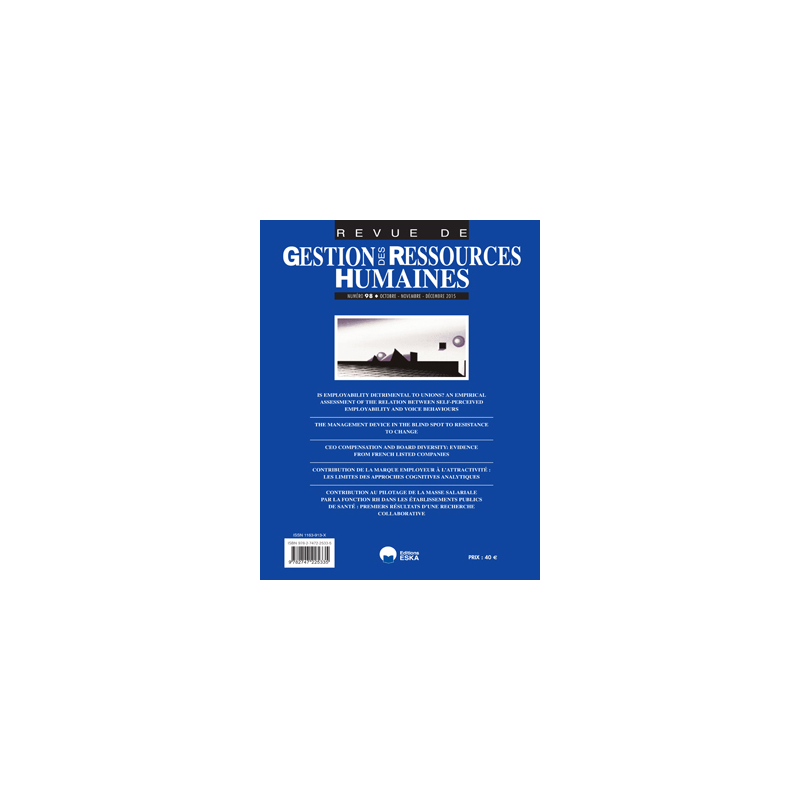



 POUR COMMANDER
POUR COMMANDER
Contactez les Editions ESKA - par téléphone 0142865565 - par mail congres@eska.fr
 CGV
CGV
Consultez nos Conditions Générales de Vente
Abstract
The exploration of the role of the resistance of nonhuman actors within the framework of organisational change is an emerging research topic. This paper aims to deepen understanding of non-human actors’ roles in resistance to change. Applying Actor- Network-Theory, we attempt to open the black box of the management device with a view to analysing the resistance of non-human actors. reflecting Actor-Network Theory principles, the article is based on a longitudinal case study of the introduction of an employee driven innovation approach in a European telecoms company. We show that resistance to change on the part of non-human actors is linked to the inter-relations between human and non-human actors within the management device supporting employee driven innovation. We identify three types of resistance associated either with unthought or conceptually flawed aspects of managerial artefacts (non-human actors), or with system effects, when resistances within the management device combine to produce a multiplier effect. Furthermore, we demonstrate that while the resistance effects of non-human actors can be obstructive, they can also be productive in that they are capable of generating learning experiences.
Keywords: Actor-Network Theory, resistance, device, non-human actor, change.
Résumé
L’exploration du rôle de la résistance des acteurs non humains dans le cadre d’un changement organisationnel constitue un sujet de recherche émergeant que cet article vise à approfondir. En mobilisant la théorie de l’acteur-réseau (Actor-Network-Theory), nous proposons d’ouvrir la boîte noire que constitue le dispositif de gestion en vue d’analyser la résistance des acteurs non humains. s’appuyant sur une étude de cas longitudinale de l’introduction d’un dispositif d’’innovation participative au sein d’une entreprise européenne de télécommunications, l’article montre que la résistance au changement des acteurs non humains est liée à l’interrelation au sein des dispositifs entre acteurs humains et acteurs non humains et permet d’identifier trois types de résistance. Elle peut provenir d’un impensé ou d’un biais de conception de l’artefact managérial (acteur non humain), ou elle peut résulter d’un effet de système, lorsque les effets de résistance au sein du dispositif se combinent et ont un effet démultiplicateur. En outre, nous démontrons que si les effets de la résistance des acteurs non humains peuvent être obstructifs, ils peuvent également être productifs en ce qu’ils sont capables de générer des apprentissages.
Mots-clés : Théorie de l’acteur-réseau, résistance, dispositif, acteur non-humain, changement.